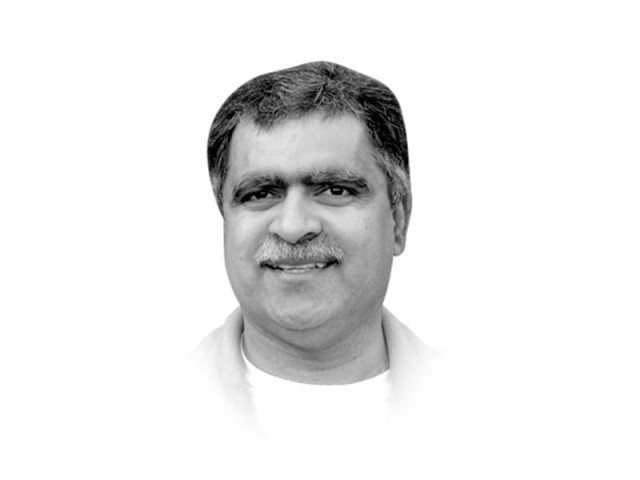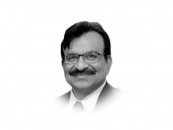The Quaid and the Quetta massacre
The self-proclaimed custodians of Islam would have killed him because Jinnah was a Shia & that would be reason enough.

The Quaid and the Quetta massacre
Jinnah, for most Pakistanis today, is the Quaid-e-Azam — the man above any sect in the Islamic Republic. As the Republic he founded increasingly becomes a place where minorities feel vulnerable, it would be remiss to forget that the founder of the country was a Shia. Born into an Ismaili family, he later converted to the Twelver (isna ashri) branch of Shia Islam. He died in 1948 and his sister, Miss Fatima Jinnah, filed an affidavit in the Sindh High Court stating that her brother was a “Shia Khoja Mohamedan”. Liaquat Ali Khan, the first prime minister of Pakistan, jointly signed the affidavit. Khaled Ahmed, in his book Sectarian War, documents in detail how the last rites of the Quaid were performed according to Shia stipulations. Jinnah’s Shia colleagues such as Yusuf Haroon and Hashim Raza attended the namaz-e-janaza (funeral prayer) at the Governor General’s House, while prime minister Liaquat Ali Khan waited outside in the adjacent room. After the Shia funeral prayer, the nascent state took the body for Sunni last rites at the grounds where now stands the Quaid’s mausoleum in Karachi. Miss Fatima Jinnah passed away in 1967 and in her case, too, private last rites were performed according to Shia guidelines and the state-sponsored namaz-e-janaza followed it.
Sunni militant outfits portray Shias as lesser Muslims and thus, lesser Pakistanis. This commandeering of state discourse on Islam from the 1980s onward has emboldened the militants to take up arms against their coreligionists in select parts of Pakistan.
The demonisation of members of both sects denudes members of their complex human identity and reduces them to a single attribute. The demonised is then treated as a tumour in society that needs to be eliminated. A group reduced to a single trait often becomes prey to pogroms — organised massacres of a particular ethnic group. Phrases from medical science and language of sanitation come handy. Adolf Hitler went for ‘total solution’ to cleanse Jews from German society. Following the assassination of Ms Indira Gandhi in 1984, at the hands of her Sikh bodyguards, her supporters murdered thousands of Sikhs around Delhi in a matter of days. The year 2012 marks the 10th anniversary of pogrom of Muslims in the Indian state of Gujarat where thousands continue to languish in refugee camps.
Finally, a massive massacre accompanied the birth of Pakistan. What is now Indian Punjab, cleaned its territory of Muslims and from the Pakistani side of the Radcliffe Line, Hindus and Sikhs were wiped. Karachi, the first capital of the country, was cleansed of its affluent Hindu population. The anti-Hindu riots of January 1948 convinced hesitant Hindus to head to India. These cleanups became possible once Hindus and Sikhs were robbed of their complex socio-economic identities and reduced to being members of antagonistic faith groups.
Ordinary Pakistanis would be surprised to learn that once even Jews lived in Pakistan without much fear and in 1947, Peshawar had two synagogues. In the 1980s, Karachi’s Magain Shalome Synagogue was demolished to make way for a shopping centre.
Two prevalent myths in Pakistan about the perpetrators of pogroms and the reasons behind religious militancy obfuscate the issue.
Popular media portrays perpetrators as crazy and deranged Muslims. The fact is quite opposite. Religious militants are a product of socialisation, common in public and private religious education, where the emphasis is on certain denominational affiliation to override all other associations and treat other groups as potential enemies of Islam. Militants may be few in numbers but they are not a crazy lot.
Secondly, the idea that the religious militancy will simply go away when the Americans leave Afghanistan is another form of complacency. The American military presence in the region and the manner in which it has lost the battle of winning the hearts and minds of locals is certainly a contributing element but the rot of sectarianism coupled with militancy predates 2001 and, with the way things stand, will outlive American departure from Afghanistan. Ordinary Pakistanis generally hold no violent grudge against religious, ethnic and other minorities. What is worrisome is the hesitation of state authorities and non-Shia clergy to rein in on the rising tide of militant sectarianism in Pakistan.
Published in The Express Tribune, July 6th, 2012.

















COMMENTS
Comments are moderated and generally will be posted if they are on-topic and not abusive.
For more information, please see our Comments FAQ